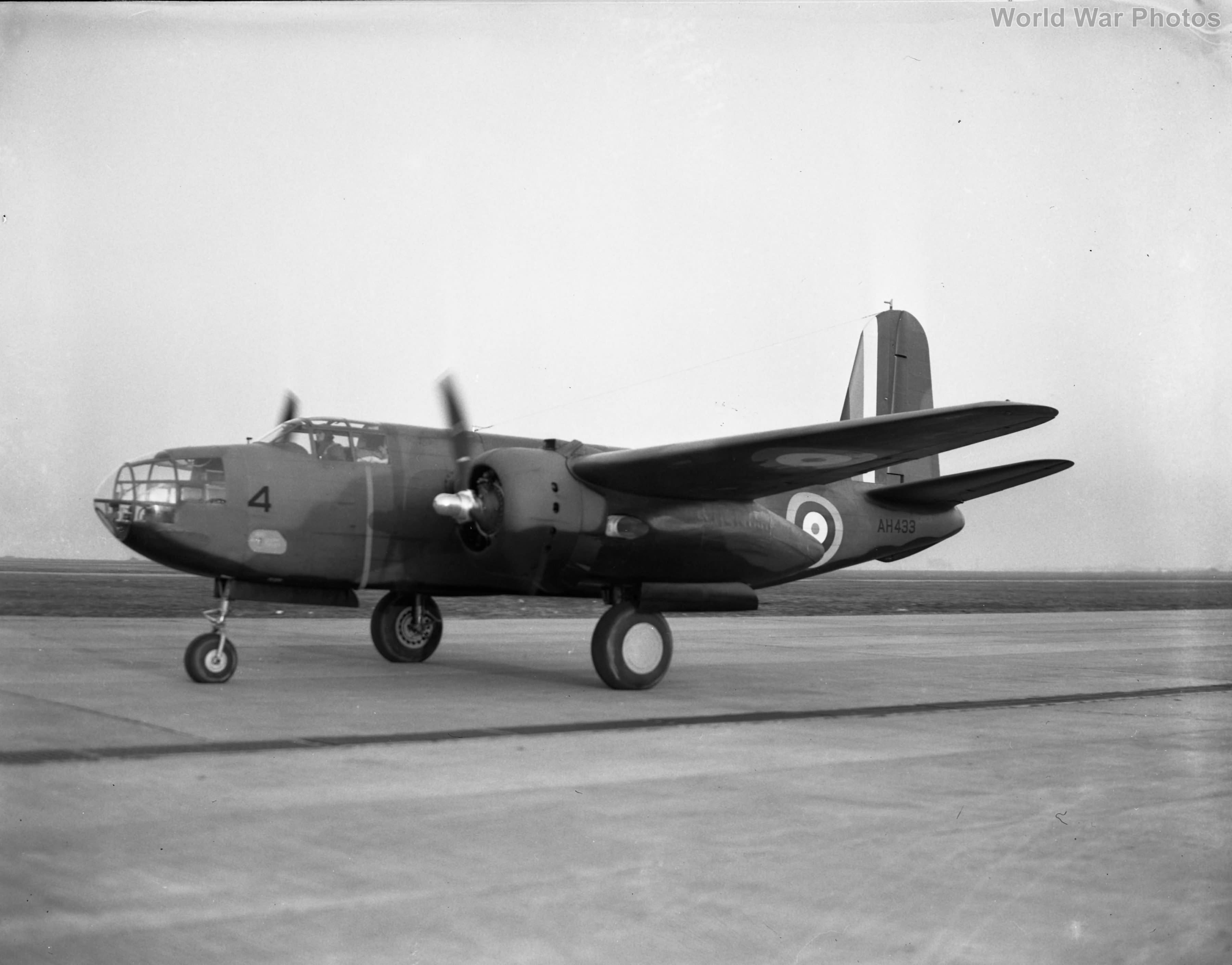On 20 October 1939, the French ordered 100 upgraded DB-7A aircraft, known as DB-71s, a week before receiving their first DB-7. Utilizing advancements from the Army’s A-20A engineering, the DB-71 featured Wright GR2600A5B Cyclone engines with two-speed superchargers, providing 1,600 bhp for takeoff and 1,350 bhp during normal cruise. These engines included PD12J1 Bendix Stromberg pressure-injection carburetors and Hamilton Standard 23E50 propeller hubs with three 6153A-21 blades each.
The increased engine power boosted the aircraft’s top speed to 323 mph (520 km/h) at 13,000 ft (4,000 m) and raised the maximum overload weight to 18,700 lb (8,500 kg), with a normal loaded weight of 16,700 lb (7,600 kg). Despite retaining the maximum fuel capacity of 325 gallons (1,230 liters) and a normal load of 205 gallons (776 liters), the more powerful engines reduced the range to less than 500 miles (800 km). The DB-71 also had additional armament, including a single fixed aft-firing 7.5mm Browning machine gun in each engine nacelle, necessitating lengthened nacelles. To enhance lateral stability and manage the more powerful engines, the vertical stabilizer and rudder were enlarged, and the engine cowling was revised with the carburetor air scoop moved behind the cowling.
Built to the Douglas detail specification DS-527A, the DB-71 combined features from the A-20 with a DB-7 airframe. Though named DB-7A by Douglas, the French designated it DB-71. As the war progressed, the French transferred their DB-7A contract to the British, who assumed administration through the British Purchasing Commission (BPC). The British took over 151 French contracts worth over $425 million just before French assets in the U.S. were frozen.
The DB-7A contract, now British contract F-294, included amendments to meet British requirements, such as fitting British batteries, the Mark X bombsight, and Vickers 0.303in machine guns. The aircraft were painted in the RAF camouflage scheme and given British serial numbers AH430 to AH529. Construction began after the DB-7 production ended in June 1940, with the first DB-7A flying on 30 July 1940.
The second DB-7A flew on 10 October 1940, after which modifications to engine cooling were made, including cutting louvres and holes in the cowling. The first DB-7A delivered to the RAF was on 20 November 1940. A total of 49 DB-7As were delivered by year-end, with another 48 by February 1941. The last DB-7A was delivered on 8 September 1941, likely resembling more of an A-20A than a DB-7A.
All British DB-7As were assembled and tested at Santa Monica before being ferried to New York, disassembled, and shipped to Britain. Once reassembled in Britain, they were operated as Havoc II night fighters by the RAF.
